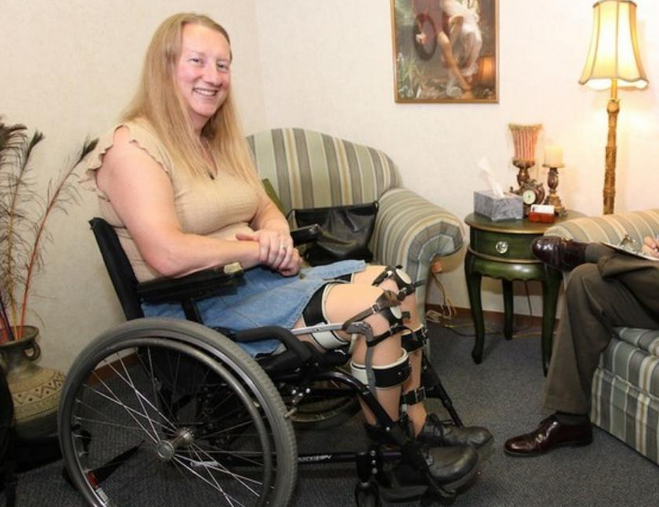
Chloe Jennings-White, a woman suffering from BIID, chooses to live as a disabled person and wants to be permanently paralyzed. (Credit: BIID.org)
When I'm feeling lowdown, overwhelmed and pitifully envious of someone else's life, my father likes to trot out the age-old adage: "The grass is always greener on the other side."
In perhaps the strangest case of envy I've ever encountered, I give you Body Integrity Identity Disorder, a condition where a person feels a compulsive desire to become an amputee; in fact, the psychological pull is so strong, individuals may harm the "offensive" limb to the point where it must be amputated (despite being originally healthy and strong).
While the medical community still considers BIID a bit mysterious, there are some governing theories on what exactly is transpiring both psychologically and neurologically to create this "desire for absence."
Those suffering from BIID (which incidentally also includes the desire to become blind, deaf or paralyzed) will often wear unnecessary prosthetics or canes to feel "complete"; they experience the limb in question as something foreign to their identity and bodily self, as something that doesn't belong there.
This desire to have a body part removed is believed to stem from a malfunctioning of the brain's right parietal lobe, which is unable to provide or perceive of an accurate "map" of the body. Thus the sufferer experiences portions of their own vessel as alien, and won't feel "whole" until they are able to rid themselves of it.
Psychologists have also weighed in on the phenomenon, explaining that these views may have been forged unintentionally at a young age; perhaps the individual met an amputee as a small child who made an indelible impact. The person may have unconsciously supplanted the worth of their own body with the ideal concept of someone else's. Removing a limb enables the individual to become one step closer to their ideal, and/or to reconcile their desired body with the current one they posses.
There is a small slice of the BIID population that is driven by a sexual component—arousal at the thought of being an amputee or the amputation process itself. This is called apotemnophilia, but it remains extremely rare. (Interestingly enough, of the 1,500-1,700 estimated suffers of BIID, most of them are middle-aged white men.)
While removing a healthy limb is highly controversial for obvious reasons, many believe it's the only "therapy" that actually works for those with BIID. In fact, many medical professionals argue that surgeons perform operations on perfectly healthy body parts all the time, from breast and nose jobs to sexual reassignment surgery. Ultimately it's about making people feel happier and more secure in their bodily identity.
Nothing touches it, other than surgery. Psychotherapy doesn’t work. Psychiatry doesn’t work. Medication doesn’t work. I’m a pretty typical example of someone who’s attempted a [number] of ways to address the problem, done years of therapy of many types, including cognitive-behavioral therapy, and nothing helps. —Sean O’Connor, who runs the websites transabled.org and biid-info.org, Newsweek.
In a kind of reverse interpretation of the sacred Hippocratic Oath—which states that all doctors will have the "utmost respect for human life from its beginning"—a few doctors (like Dr. Robert C. Smith, a surgeon at Scotland’s Falkirk and District Royal Infirmary, who's amputated two different patients' legs) have argued that by safely removing a limb of someone suffering from BIID, they're actually preventing a much deadlier alternative. Desperate measures at self-mutilation have been taken in the past, including hack saws, train tracks, shot guns and dry ice.






